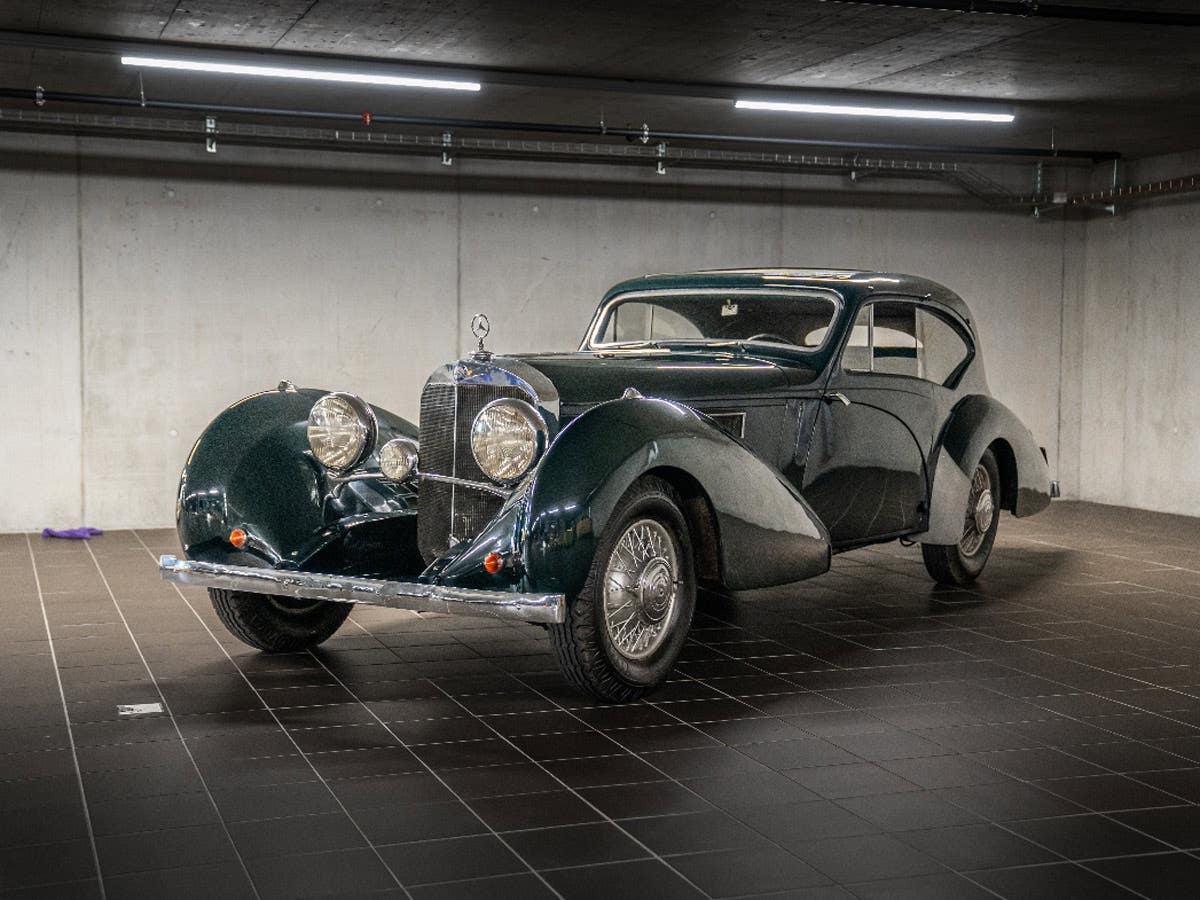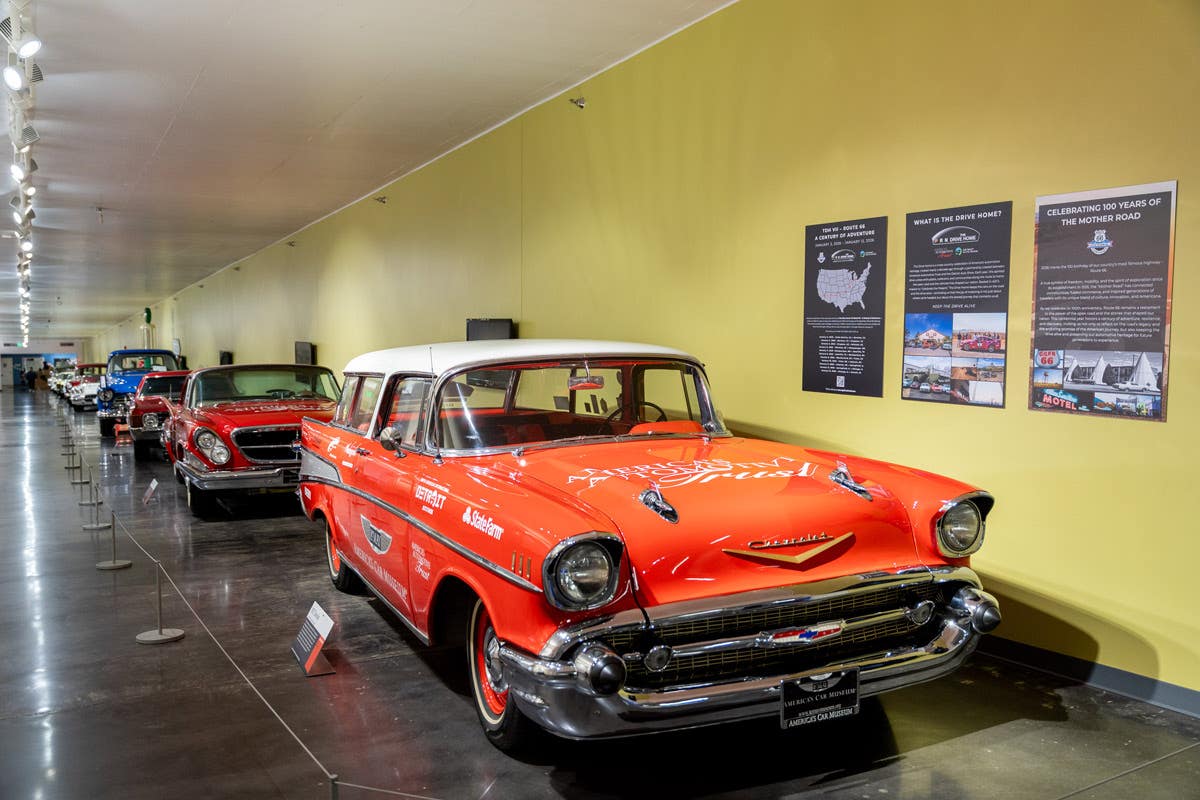You grab the handle of your parts car and tear open the door, only to be greeted in the face by a huge spider web with an occupant that you swear has fur and fangs and a body six inches across. It's at this moment that you look for that little red hourglass on its back and wonder: "Is this a Black Widow?"
Well, that spider is just one of the many little creatures that like old cars, too, but for different reasons. You've now invaded the spider's house. What a better hangout than the inside of a 1957 Chevrolet, baking in the sun through the magnifying glass.
Nash spun off the Lafayette brand only from 1934-'36, so finding any model, including this sedan, from that period is rare. In all the excitement of discovering the car abandoned in the woods, be careful of critters that may have taken up residence in the car and won't be happy about someone invading their home. (Ron Kowalke photo)
It's not a bad idea to research a bit about the animals that you may encounter in and around old cars before heading out on the parts hunting trail. Yes, most of the critters you encounter are basically harmless, but it would be a good thing to know ahead of time if you're going to swell like a balloon if you're allergic to bee or wasp stings. These little buggers love to hang out in headliners, dashes, seats and engines. And they don't like company. Most of the time, a little WD-40 will tame them, but if not, watch out!
One of the smallest creatures collectors encounter is mice. They're not like Jerry from the cartoon "Tom and Jerry." Mice can quickly destroy a car's interior. The fabric in the seats and headliners makes great nesting material.
Have you been thinking of using dryer fabric sheets to keep out mice? No, they just make nice blankets and decoration for their nests in your dash's heater ducts or in the air cleaner. I've found that Irish Spring soap works best in my Chevelle SS. Also, be careful if you're cleaning a car that has been infested with mice make sure to wear a mask. Mice carry Hanta Virus. That car isn't worth dying for, even if it's that last one on Earth!
It's not just what's in the cars that can be an interesting encounter, but also what's under the cars. A few years ago, when we moved my father's collection of cars, the groundhogs had a whole city under those 1957 Chevys and ran from one to the other as we moved them. Those friendly spring predators and their raccoon friends just love rusty holes in floors. They scurry up and strip the seats for material for their nests. You might even find a trunk full of babies. It's always a good thing to knock before entering. It's a birthing suite and protected from the elements year round.
These critters won't bother you too much, unless you provoke them. But realize they can be rabid or sick.
For a recent auction, I was seated in a Packard while inventorying cars and heard a noise. It's a good thing to listen for anything other than the wind. I got out and opened the car's hood to get the VIN and check the engine number, and discovered a gray, humped-up furball near the frame that began hissing. In Norwegian, dog or any language, that hissing translates to "Shut the hood and run!"
Rabbits are friendly and usually just bolt when approached. In the Midwest, our little prairie friends are easy to get along with. But in other parts of the country, there can be other encounters, some deadly. I've heard of a salvage yard in the South that stocks anti-venom kits because of the water moccasins and rattlesnakes that frequent the yard! Scorpions and brown recluse spiders can also frequent Hotel Ford in parts of the country, and must be avoided.
There are also some domestic animals such as dogs and cats that you may encounter in cars. For these animals, "Here puppy, puppy/kitty, kitty" can mean rabies shots!
When working with rusty metal, keeping your Tetnus shot up to date is always a good idea. No one likes lockjaw.
In addition to woodticks (Lyme disease), another small and potentially harmful creature that doesn't immediately show up is the salvage yard's best hidden menace, chiggers. What's a chigger? If you've had them, you know! All of a sudden you notice red bumps on your legs, and if really bad, creeping north. Don't itch these bumps, as that promotes spread of the chiggers. They tunnel under your skin. One way to kill them is to "paint" the skin where bumps surface with fingernail polish. This suffocates them. It may take a few applications, but they eventually die. There is also a product called Chigger Guard that works well.
So the next time you are searching through cars for parts, think ahead a bit and remember that the animals love old cars, too. Most of the time we can all get along, but take the right precautions and it'll be happy hunting.
Yvette VanDerBrink is the head of VanDerBrink Auctions (605-201-7005 or www.vanderbrinkauctions.com). She deals with salvage vehicles year-round, and understands both the dangers and precautions needed when dealing with insects and wild animals.








